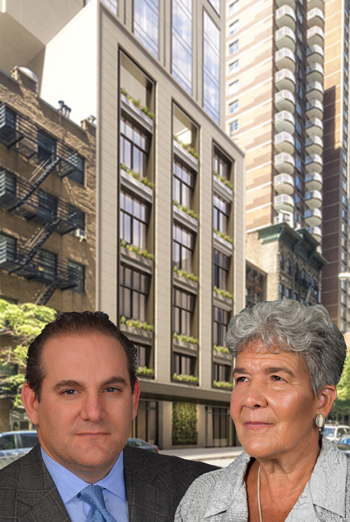The city has struck a deal over the proposal to cap the height of Gamma Real Estate’s [TRDataCustom] planned 800-foot tower on East 58th Street.
Instead of limiting the height of the tower to 260 feet, Gamma will need to adhere to “tower on a base” standards for 430 East 58th Street — which means that 45 to 50 percent of the building would need to be built below 150 feet, Politico reported. That effectively means that a limited amount of valuable square footage can be dedicated to the tower’s upper floors.
Powerful neighborhood group the East River Fifties Alliance, along with several local officials, pushed for a rezoning in the area that would limit the height of Gamma’s building (formerly known as 3 Sutton Place, now called Sutton 58), and require affordable housing if the developer wanted to build taller. Gamma argued that the effort was driven primarily by wealthy residents of the Sovereign — a building adjacent to Sutton 58 — who didn’t want their views blocked.
Under this new proposal, Gamma’s project won’t be subject to height limits or affordable housing requirements. The scale of the building, however, will be restricted.
“The combination of these rules would more closely align future construction with the existing built environment, while still accommodating reasonable growth,” the East River Fifties Alliance, wrote in its revised proposal.
Gamma does not support the latest proposal.
Mayor Bill de Blasio didn’t support the original rezoning proposal, and the Department of City Planning had voiced concerns over the affordable housing requirement.
“The … proposal would require more affordable housing per square foot of additional floor area than is required in the immediately surrounding areas. While this may sound like an attractive concept, in practice it would have the opposite of the purported effect,” Lago wrote to East River Fifties in a May 4letter, obtained by Politico. “If developers in one area were entitled to a different bonus ration than developers in another nearby area, this would steer affordable housing toward or away from certain areas.”
A hearing will be held on the latest proposal on Oct. 18. [Politico] — Kathryn Brenzel
